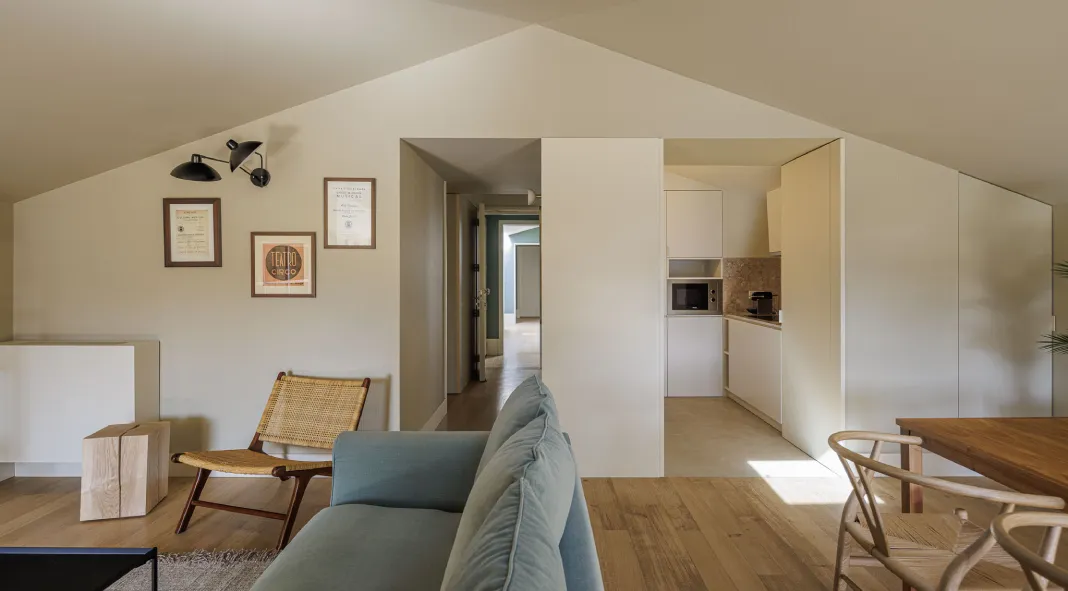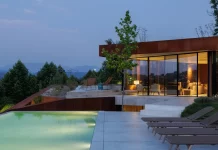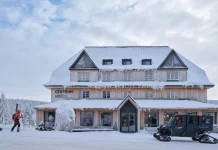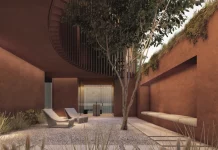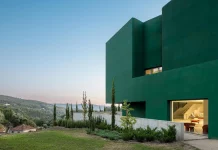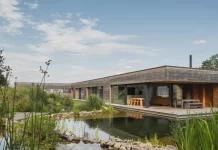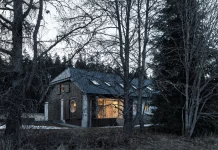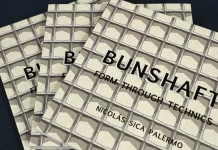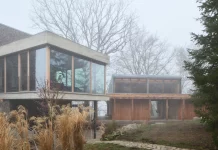The Transformation of a 20th Century Building by Atelier Arquitectos Aliados
Architectural transformations can breathe new life into historical buildings, preserving their essence while adapting them to modern needs. A prime example of this is the comprehensive overhaul undertaken by Atelier Arquitectos Aliados on a building originally designed by Moura Coutinho in the early 20th century. The photography by Ivo Tavares beautifully captures this stunning metamorphosis.

A Historical Canvas
Originally conceived to house a bakery on the ground floor with offices and residential units above, this building in Portugal witnessed several changes towards the end of the millennium. Its architectural roots, deeply influenced by Coutinho’s trips to France, are evident in the asymmetrical lower floors contrasting with the symmetrical upper levels. The ground floor features a local grey granite plinth and a high relief frieze inspired by Sumerian winged figures, a wider entryway for shops, and an elegant door for residential access.
The Overhaul
Commissioned in the early 21st century, Arquitectos Aliados embarked on a mission to revamp this historical structure, preserving its commercial essence on the ground floor while infusing a strong hospitality component into the upper levels. The comprehensive overhaul involved intricate interior design and modern amenities, seamlessly blending history with contemporary functionality.
Ground Floor
The ground floor retains its historical charm with the local grey granite plinth and Sumerian-inspired frieze. The entrance retains its elegance with a wider entryway for commercial access and a more sophisticated door leading upstairs. The bow window above the residential entry and the three arched windows above the commercial door add a touch of historical elegance.
Upper Floors
The upper floors maintain their original charm with sets of three horizontal windows and a top floor adorned with a faux colonnade and Parisian-style dormer windows. The terracotta tile roof, a hallmark of the original design, now boasts white zinc lining to accommodate modern elements like ventilation units and skylights. The building’s original shades of pink, grey, and white have been replaced by a more contemporary palette of mustard yellow, ivory white, and cream white.
Modern Adaptations
Inside, the building has been transformed to house nine variations of short-term accommodation flats, each uniquely designed. Arquitectos Aliados meticulously crafted the interior design package, including all FF&E and furniture. The modern amenities include a new stairwell and elevator, a spacious lobby replacing the original smaller ones, and an accessible first-floor terrace achieved by removing obstructive annexes.
A Harmonious Blend
The rear façade, retaining its symmetrical design, echoes the contemporary attitude seen throughout the building. The harmonious blend of historical elements with modern functionality stands as a testament to the architectural prowess of Arquitectos Aliados. The project, initiated in 2016 and completed in 2022, reflects three years of meticulous work under the close supervision of the design team.
Photography by Ivo Tavares Studio
The architectural photography by Ivo Tavares Studio vividly captures the essence of this transformation. The images highlight the intricate details of the façade, the elegance of the interiors, and the seamless blend of old and new. Each photograph tells a story of heritage preserved and modernity embraced.
This project by Atelier Arquitectos Aliados is a remarkable example of architectural revival, where historical charm meets modern sophistication, creating a space that honors its past while embracing the future.
All images © by Ivo Tavares. Don’t hesitate to find other inspiring projects in the Architecture and Interior Design categories on WE AND THE COLOR.
Subscribe to our newsletter!

